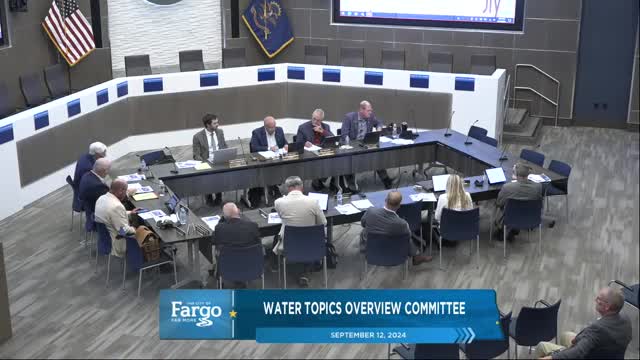North Dakota battles invasive species threatening waterways
September 12, 2024 | Fargo , Cass County, North Dakota
This article was created by AI summarizing key points discussed. AI makes mistakes, so for full details and context, please refer to the video of the full meeting. Please report any errors so we can fix them. Report an error »

In a recent government meeting, Ben Holland, the Aquatic Nuisance Species Coordinator for the North Dakota Game and Fish Department, provided a comprehensive update on the state's ongoing battle against aquatic nuisance species (ANS). Holland highlighted the significant threat posed by non-native species, which can disrupt local ecosystems, recreational activities, and the economy.
Currently, North Dakota has identified 33 species of aquatic nuisance species, with eight documented in the state, including common carp, zebra mussels, and Eurasian watermilfoil. Holland emphasized that while the state is in a relatively good position, the presence of zebra mussels is particularly concerning due to their rapid reproduction and ability to clog water infrastructure.
Zebra mussels, first discovered in North Dakota in 2019, can reproduce at alarming rates, with a single female capable of producing up to one million eggs annually. Their proliferation can lead to significant ecological changes and infrastructure challenges, as seen in the case of the Bald Hill Dam, where zebra mussels severely impacted water flow.
To combat these invasive species, the North Dakota Game and Fish Department has implemented a management plan that focuses on prevention, control, and public education. This includes regulations requiring that docks and lifts be out of water for 21 days before being moved to prevent the spread of zebra mussels. Holland noted the importance of public awareness campaigns, which have reached millions through targeted digital marketing and community outreach.
Monitoring efforts are also crucial, with the department conducting inspections of watercraft and commercial equipment to prevent the introduction of invasive species. Holland reported that inspectors have conducted approximately 10,000 watercraft inspections this year alone.
The meeting underscored the collaborative approach taken by various state agencies and local organizations to address the threat of aquatic nuisance species. As North Dakota continues to face challenges from invasive species, the emphasis on education, regulation, and monitoring remains vital to protecting the state's waterways.
Currently, North Dakota has identified 33 species of aquatic nuisance species, with eight documented in the state, including common carp, zebra mussels, and Eurasian watermilfoil. Holland emphasized that while the state is in a relatively good position, the presence of zebra mussels is particularly concerning due to their rapid reproduction and ability to clog water infrastructure.
Zebra mussels, first discovered in North Dakota in 2019, can reproduce at alarming rates, with a single female capable of producing up to one million eggs annually. Their proliferation can lead to significant ecological changes and infrastructure challenges, as seen in the case of the Bald Hill Dam, where zebra mussels severely impacted water flow.
To combat these invasive species, the North Dakota Game and Fish Department has implemented a management plan that focuses on prevention, control, and public education. This includes regulations requiring that docks and lifts be out of water for 21 days before being moved to prevent the spread of zebra mussels. Holland noted the importance of public awareness campaigns, which have reached millions through targeted digital marketing and community outreach.
Monitoring efforts are also crucial, with the department conducting inspections of watercraft and commercial equipment to prevent the introduction of invasive species. Holland reported that inspectors have conducted approximately 10,000 watercraft inspections this year alone.
The meeting underscored the collaborative approach taken by various state agencies and local organizations to address the threat of aquatic nuisance species. As North Dakota continues to face challenges from invasive species, the emphasis on education, regulation, and monitoring remains vital to protecting the state's waterways.
View full meeting
This article is based on a recent meeting—watch the full video and explore the complete transcript for deeper insights into the discussion.
View full meeting
